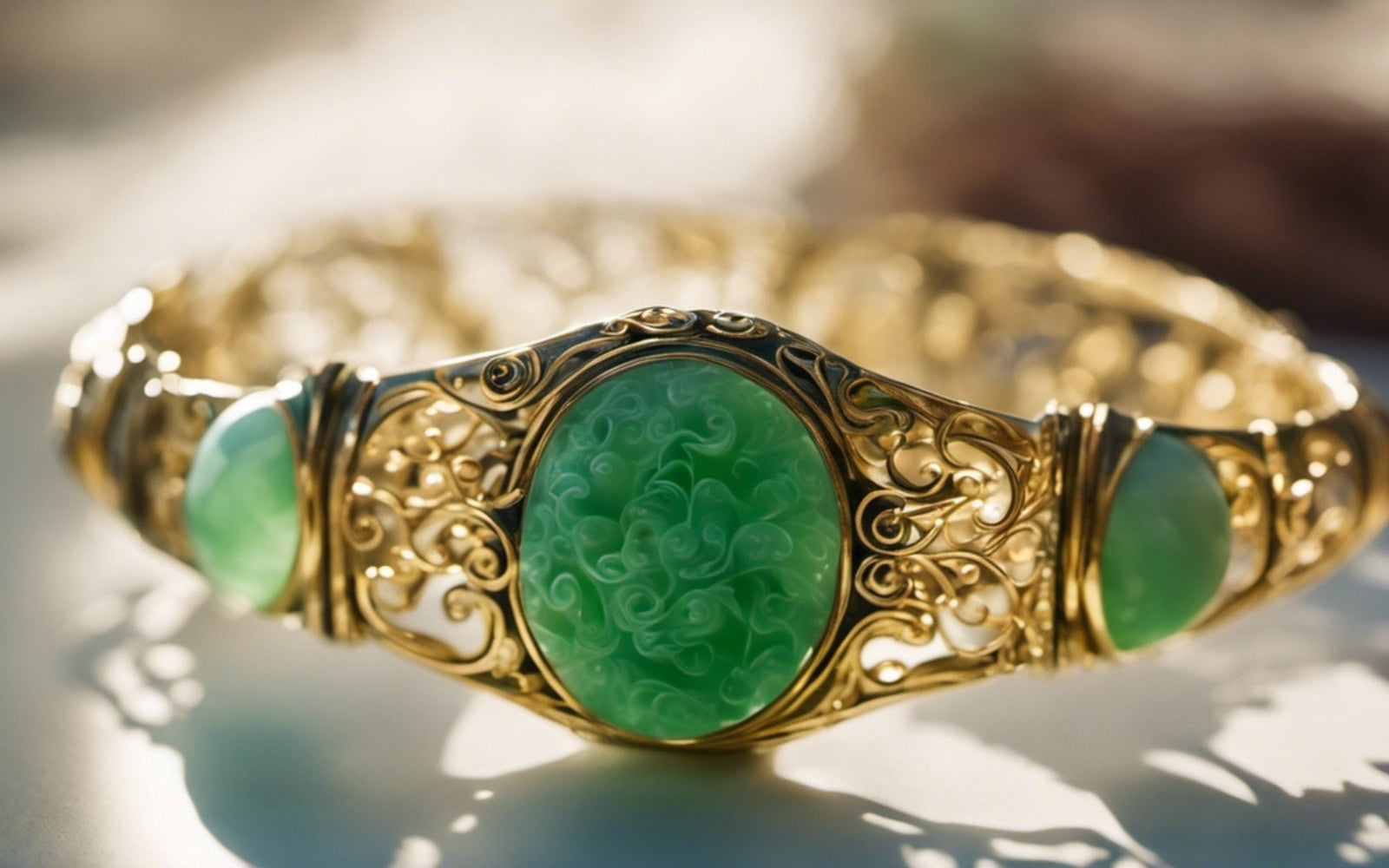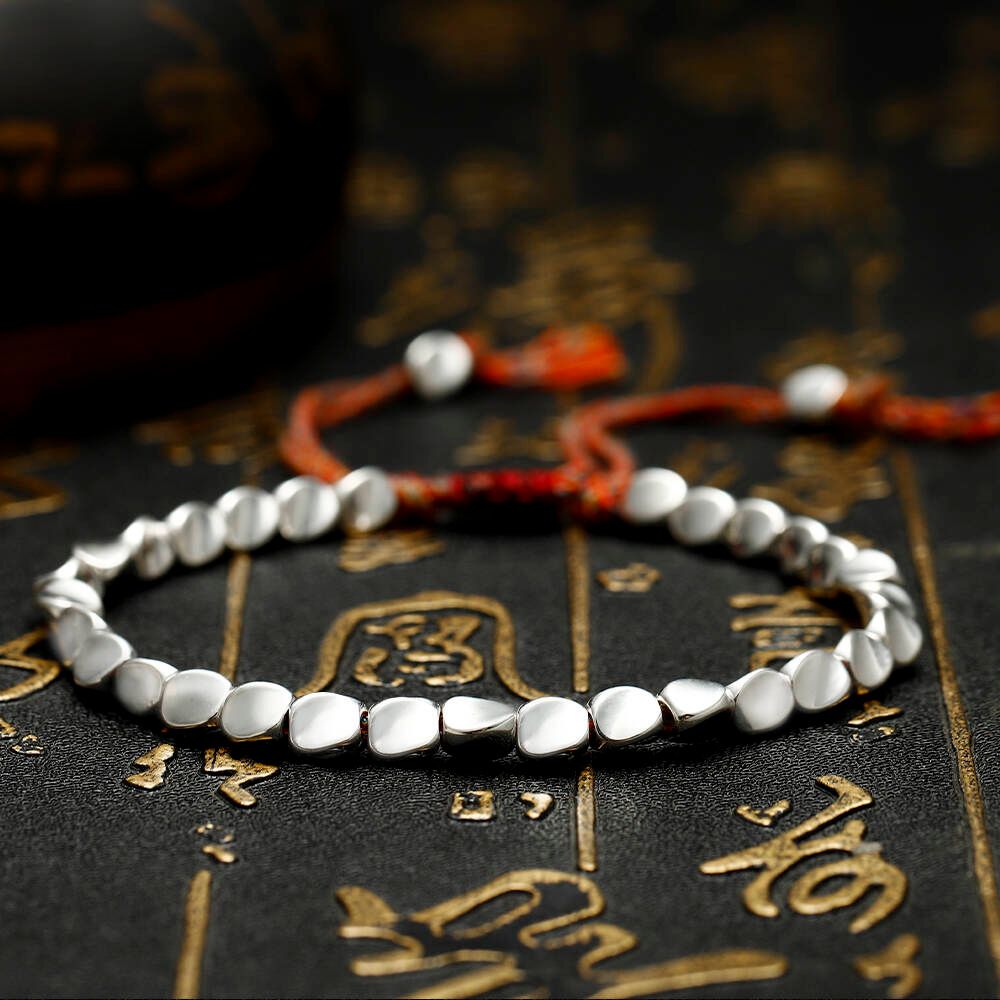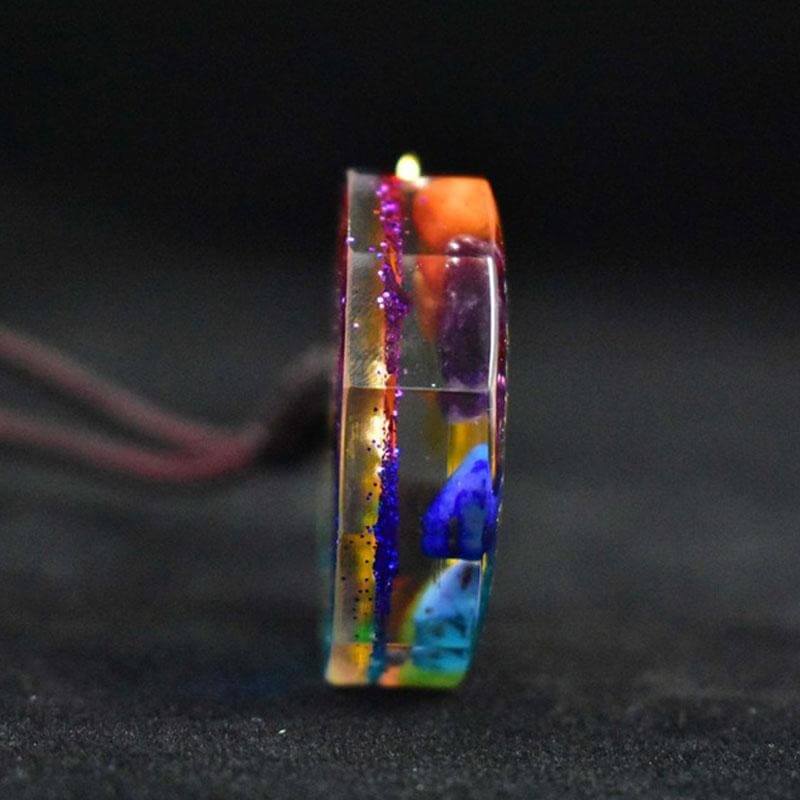How to Tell if Jade Bracelet is Real: 6 Tests You Can Do at Home
min read
Wanting to buy a jade bracelet but not sure if it’s made of real jade? Let us help you make an informed decision.
Buying authentic jade jewelry is crucial if you want it not only for its beauty but for the crystal’s healing and wealth-attracting properties. However, some jewelers in the market can deceive you with fake jade if you’re not careful.
We understand that not everyone has access to special tools or lab tests to verify the authenticity of jade. The good news is that there are DIY tests you can do at home. From visual inspections to sound tests, these methods can help up your chances of getting bracelets made of natural jade stones.
Jump to these topics
Real vs Fake Jade Bracelet: Key Differences
To determine if a jade bracelet is real or fake, it's important to understand the key differences between the two. Let's take a quick look at how you can compare real and fake jade bracelets.
|
Feature |
Real Jade |
Fake Jade |
|
Color |
Typically green, though can come in different colors. Color is often unevenly distributed, more subdued. |
Often brightly colored. Fake jade might have overly consistent coloration. |
|
Temperature |
Feels cold to the touch and takes a while to warm when held. |
Warms quickly when held, may not feel cool initially. |
|
Texture and Hardness |
Smooth to the touch, hard, and resistant to scratching. Jadeite (6.5-7 Mohs) and nephrite (6-6.5 Mohs) are both quite durable. |
May feel slightly sticky or not as smooth. Often softer, can be scratched more easily against metal objects. |
|
Density |
Generally heavy for its size, due to high density. |
Fakes (especially resin or plastic ones) are typically lighter. |
|
Translucency |
Quality jadeite is often semi-translucent. Nephrite might be more opaque but can be translucent in thin sections. |
Fake jade can vary; some fakes are more transparent or uniformly translucent. |
|
Sound |
When clinked together, real jade produces a resonant, almost musical sound. |
Fake jade often sounds duller or more "plastic" when tapped. |
|
Price |
Genuine jade, especially jadeite, can be quite expensive, depending on its quality. |
Suspiciously cheap, even for pieces that look high-quality. |
6 Ways to Verify Authentic Jade Bracelets DIY-Style
If you're keen on reaping the full jade bracelet benefits, it's crucial to make sure you have an authentic item. Here are some methods you can employ to check the authenticity of the gem right at home, no fancy tools or lab tests required.
1. Visual Inspection: Check Color & Transparency
There are three things to look for in your jade bracelet visually: color, transparency, and inclusions.
Check jade’s coloration
Real jade stones have a natural color variation and come in various shades of green, ranging from light to dark. It may also come in other colors such as white or lavender.
When examining a jade crystal, look for subtle variations in coloration. Genuine jade often exhibits color zoning. This means it has different shades within the same piece, creating a beautiful and natural appearance.
Meanwhile, counterfeit jade bracelets may have a uniform color that looks too perfect or overly vibrant.
Check jade’s translucency
In terms of translucency, real jade ranges from translucent to opaque. Translucency refers to how well light passes through the stone.
While jade stones can never be fully transparent, you can find some crystals that have high translucency. These ones are often the most desirable jade stones.
To test the translucency of jade, hold it up to a source of light. This can be sunlight or a flashlight. Then, observe how it interacts with the stone. Genuine jade will have varying degrees of transparency, allowing some light to pass through while still maintaining its characteristic green hues.
Check jade’s inclusions
Real jade stones often have natural flaws, including minor cracks or inclusions. These inclusions are natural elements that have formed over time within the crystal structure.
A bracelet that seems perfect can be a sign that it’s not authentic. Also, the existence of air bubbles can also suggest that jade isn't real. You can find these air bubbles frequently in materials such as glass.
2. Touch Test: Feel the Coolness & Smoothness of the Stone
Natural jade typically has a cool, smooth texture when touched.
Check jade’s temperature
Jade stone stays cool to the touch, even in warm environments, because it's a good conductor of heat.
Leave the stone in direct sunlight for an hour or hold it in your hand to warm it up, then see if it feels cool. If it doesn't, it's likely not jade.
Check jade’s texture
You may also feel slight imperfections or unevenness on its surface due to its natural formation process. Run your fingers along the surface of the crystal accessory and pay attention to how it feels. If it’s smooth without any imperfections, it can be imitation jade.
3. Sound Test: Listen to Jade’s Distinct Pitch
Another way to check jade’s authenticity is by conducting a sound test.
This method is particularly effective for jade bangles because of their shape. The bangle’s circular form makes the sound waves travel in a specific way, allowing for a distinctive resonance that's difficult to replicate with fake materials.
Gently tap the bracelet with a piece of metal. High-quality jade such as jadeite produces a deep, resonant sound. Some medium to low-quality jade like nephrite may also sound a little resonant and high pitched.
Meanwhile, counterfeit pieces tend to make a duller or muted sound. They lack the vibrant resonance that genuine jade possesses. These counterfeit materials may give off a plastic-like or metallic noise instead.
It's important to note that different types of jade may have slight variations in their sound due to their composition and quality. For example, nephrite and jadeite are two common types of natural jade with different characteristics and sounds.
4. Density Test: Feel Its Weight
Real jade is denser and heavier compared to most imitations. When holding a genuine jade bracelet in your hand, you'll notice its weight feels substantial.
Conversely, imitation jade bracelets are often lighter since they are made from materials like glass or plastic.
For this method, throw the stone in the air and catch it. This allows you to feel the weight and solidity of the piece.
Pay attention to how it feels; the piece should fall back into your hand with a solid, weighty feel. This sensation is due to jade's high density.
Be careful not to throw it too high, as jade can be delicate and might break or get damaged if dropped.
After catching it, hold the jade in your hand once again. If it's real, the density should give it a perceptible heft, making it feel heavier than it looks. Counterfeit jade or materials used to imitate jade will often feel lighter and less substantial.
This test works best if you have a known real jade stone of similar size for comparison.
5. Scratch Test: Resistance to Scratches
The scratch test focuses on the hardness factor of the jade stone. By observing its resistance to scratches, you can identify signs of fake jade.
Note that this method can damage the stone. Use it as a last resort to determine your jade jewelry’s authenticity.
To test the hardness factor, use common household items like scissors or steel objects. Gently apply pressure and try to scratch the surface of the stone.
Authentic jade will not easily show scratches due to its high mineral density and composition. It has a hardness rating between 6.5 and 7 on the Mohs scale, making it harder than most other gemstones.
When scratched with a steel object or scissors, real jade should remain relatively unscathed.
On the other hand, fake jade or materials that imitate jade will exhibit more visible scratches when subjected to the same test. These imitations are often made from glass or plastic, which have lower hardness levels compared to genuine jade.
6. Price Comparison: Research Market Value
Now that we've covered some tests to determine if a jade bracelet is real, let's move on to another important aspect: price comparison.
Understanding how much is jade worth in the market can help you determine whether a jade bracelet is genuine or not.
Genuine jade holds a significant price due to its scarcity and unique properties. Meanwhile, imitation bracelets can be cheap, which can indicate their value.
So, look up the current market prices for real jade, focusing on pieces that are similar in size, color, and quality to yours. Prices can vary widely based on these factors.
If the price you paid for your jade piece, or the price at which it's being sold, is significantly lower than the market price for similar genuine jade items, this might be a red flag. Genuine jade, especially without any cracks, vibrant in color, and translucent, is rarely "cheap."
Here are some key points to consider when comparing prices:
- Quality: High-quality jade, particularly jadeite, can be quite expensive, often selling for hundreds or thousands of dollars. Nephrite tends to be less expensive but can still carry a significant price tag, especially for high-quality or antique pieces. Keep in mind that different types of jade may vary in value.
- Certification: Reputable sellers often provide certification for their jade products, which guarantees authenticity and quality. Look for certifications from recognized gemological institutes like GIA (Gemological Institute of America).
- Origin: The origin of the jade can impact its value. Certain regions, such as Myanmar (formerly Burma) and Guatemala, are known for producing high-quality jadeite and nephrite respectively.
Remember, if a deal seems too good to be true, it probably is! Be cautious when purchasing online or from unfamiliar sources.
Telltale Signs of Fake Jade Bracelets
Jade bracelets are said to bring good luck, healing, and abundance to those who wear them. For instance, the jade Pixiu bracelet is worn to enhance the flow of money according to Feng Shui.
However, you won’t get these benefits if you’re wearing a fake jade bracelet!
That’s why it’s important to avoid getting deceived by these imitation products. In this section, discover the telltale signs that you’re looking at a counterfeit jade stone.
Identifying Common Red Flags
- Feels Warm to the Touch: Genuine jade is known for its cool surface, even in a warm environment. A bracelet that feels warm or rapidly adopts the temperature of its surroundings is likely not real.
- Flawless Appearance: Jade stones characteristically have natural flaws, including tiny cracks or inclusions. If your jewelry presents a completely smooth, imperfection-free surface, it might signal a lack of authenticity.
- Consistent, Uniform Color: The real deal usually displays color variations, exhibiting subtle differences in shades and natural patterns throughout the stone. If it is showing perfectly consistent color, lacking these natural variations, it might be a counterfeit.
- Feels Lighter Than Expected: The stone has a significant heft due to its density. If the bracelet feels lighter than you would anticipate for its size, this could indicate it's made from a less dense, imitation material.
- Sounds Dull or High-Pitched When Clanked: Authentic jade bangles produce a resonant, almost musical chime when tapped against another piece of jade or metal. If the sound is more of a dull thud, it's likely not real.
- Too Glossy or Reflective: While jade can be polished to a smooth finish, it shouldn't be excessively shiny or glass-like. An over-the-top glossiness that reflects light like a mirror might indicate a synthetic material.
- Presence of Air Bubbles: When closely examined, genuine jade shouldn't have air bubbles. The presence of such bubbles suggests it's made of glass or plastic.
- Extreme Transparency or Opacity: Real jade can range from semi-transparent to opaque, but it should never be fully transparent or so opaque that it appears dull or chalky. Extreme ends of either spectrum are red flags.
- Surface Scratches Easily: Jade is a very hard material. If the bracelet's surface scratches easily with a metal object, like a key or coin, it's likely not genuine.
- Unnatural Vibrant Colors: Although jade does come in various colors, extremely bright or unnaturally vibrant shades that seem to be too "perfect" or consistent might indicate dyes or artificial treatments, suggesting the bracelet is not authentic.
Wrapping Up
You've now learned how to tell if a jade bracelet is real or fake! By conducting the tests outlined in this blog post, you can confidently assess the authenticity of any jade bracelet you come across.
Remember, it's crucial to consider multiple factors. We recommend using the tests together to help you make an informed decision before making a purchase.
Now that you possess this valuable knowledge about authenticating jade bracelets, go out there and find yourself a genuine piece of beauty. Happy shopping for jade jewelry!
FAQs
Can I perform these tests on my own?
Yes! These tests are designed for anyone who wants to determine the authenticity of their jade bracelet without needing any specialized equipment. With just a few simple tools like metal and your senses, you can easily conduct these tests at home.
How accurate are these tests?
While these tests can provide helpful insights into the authenticity of a jade bracelet, they may not offer definitive proof. Some advanced counterfeit pieces may pass some of these tests but still be fake. It's always recommended to consult with experts or reputable jewelers if you have any doubts about your jade bracelet's authenticity.
What should I do if I discover my jade bracelet is fake?
If you find out that your jade bracelet is fake after conducting these tests or consulting with experts, it's important not to panic. Take it as a learning experience and be cautious when making future purchases. Consider returning the item if possible or sharing your experience to help others avoid falling into the same trap.
Can I trust online sellers when buying a jade bracelet?
While there are reputable online sellers, it's essential to exercise caution when purchasing valuable items like jade bracelets online. Always research the seller's reputation, read customer reviews, and check if they have a blog that educates their customers before making a purchase. Trust your instincts and only buy from sources you feel confident about.














Leave a comment